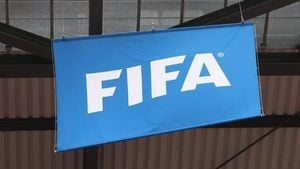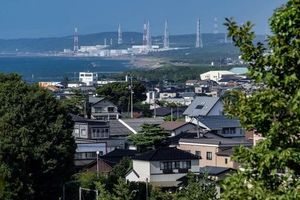On a crisp morning in 2019, independent producer Dustin Harris found himself in Griffith Park, Los Angeles, ready to begin filming "Malibu Horror Story." But before a single camera could roll, Harris had to comply with a city-mandated ritual: a fire marshal inspection. What happened next, as Harris recounted to TheWrap, was both baffling and emblematic of the labyrinthine bureaucracy that now defines filming in the city that once called itself the entertainment capital of the world.
"He shows up, looks around, says ‘great,’ and then spends the rest of the shoot sitting in the car doing crossword puzzles," Harris said. For this service, Harris paid nearly $1,500 a day. "As a resident, I understand the need for fire protection and to preserve our parks, especially now. But there’s got to be a better way to do this. I’m paying almost $1,500 a day for a guy to sit in his car for most of the time."
That was only the beginning. Harris, founder of the independent production company Posh Mouse, pulled out his permit paperwork for the three-day shoot. The tally: a $685 permit application fee to FilmLA (now $931), $2,964 for a required monitor from the Department of Parks and Recreation, a $456 "reporting fee" for that monitor, $1,350 for a film use fee, $4,536 for the fire safety officer (the crossword enthusiast), and an $85 “spot check surcharge” to the fire department. All told, Harris paid $10,119 in permitting and inspection fees—money, he noted, that "has nothing to do with our film, a film that had no major lighting and no major stunts. We were running on a putt-putt generator."
For major studios with deep pockets and the benefit of California’s expanded production tax credits, such fees are a drop in the bucket. But for independent producers—those who stretch every dollar and provide crucial work for local crew and actors—the mounting costs are a breaking point. As Harris put it, "If you go to other parts of the country, they get excited when they hear you’re making a movie. It’s not like that in L.A. I live here. I want to shoot here. But sometimes it feels like a hostile place for filming."
He’s not alone. The most recent quarterly report from FilmLA, the city’s contracted permit office, shows that the number of shoot days in Los Angeles has plummeted to 4,380—a staggering 37% below the five-year average and almost half the 8,674 shoot days recorded in the third quarter of 2022. According to TheWrap, this decline is part of a broader trend as independent producers increasingly move their projects out of Los Angeles, lured by friendlier regulations and lower costs in other states.
Stay in LA, a grassroots campaign launched at the start of 2025 after devastating January wildfires, has become the standard-bearer for those fighting to keep indie productions in the city. Their mission: cut through the bureaucratic red tape and reduce the fees that are driving filmmakers away. The organization’s head of legal affairs, Kate Holguin, and IATSE 706 member and makeup artist Cale Thomas, point out the stark differences in costs. In New York, a basic permit for two weeks costs $500; in Los Angeles, it’s $931 for just one week. "A production has to pay $1,862 for the same amount of time for an on-location shoot that New York offers for less than a third of that cost," Thomas explained.
But the fees are just the tip of the iceberg. Special conditions—neighborhood-specific regulations that can be as granular as a single block—add further complexity and expense. Chad Engel, who co-founded Posh Mouse with Harris, described a recent shoot for a TikTok commercial in a private Sherman Oaks residence. Because the house was on a street with a slight incline, the production was required to hire two police officers at $1,500 a day, plus a site representative. "We just had 10 people on that film crew but now my personnel is up by 30%," Engel lamented.
Thomas noted the frustration with these special conditions: "They’re decades old. No one has opened up the books and asked ‘What is this code? Where did this ordinance come from? Do we still need it?’" The result is a regulatory maze that even the most diligent producers struggle to navigate.
Then there are the so-called "inconvenience fees," payments demanded by residents and businesses for disruptions caused by filming. While compensating for lost business is fair, producers argue the fees have become excessive. Holguin emphasized, "Obviously you want to make sure the businesses who are losing some customers because something is shut down get paid equitably. But I think that they have to understand that production is a really good thing for them, not just in terms of the tourism that the film industry brings but because these are jobs for your fellow residents, your neighbors, perhaps even your potential customers." Thomas added, "If the Department of Water and Power or a street repair crew has to do work on a street, businesses aren’t asking for $10,000 from them even though they might take up the same street space as a film crew."
Denise Gutches, CFO and COO of FilmLA and soon to be CEO, acknowledges the challenges. FilmLA was created in 1995 to streamline the application process, but the complexity has only grown. Gutches told TheWrap, "I think we have the attention of the city and the sense of urgency now seems to have finally picked up, even though it took a few months to get there."
In early 2026, FilmLA will launch a "low-impact permit" pilot program aimed at streamlining the inspection and fee process for productions with up to 10 cast and crew members (possibly up to 15-20). The program, developed in collaboration with city departments and advocacy groups like Stay in LA, will minimize the number of agencies involved and reduce fees. Gutches explained, "We’ve gotten a lot with support from LAPD, LAFD, and Parks and Rec to reduce or eliminate certain fees for this type of permit and to ensure that it’s something that we can actually push through pretty immediately."
To address the controversy over inconvenience fees, FilmLA will begin a public information campaign this winter to educate communities and businesses about the economic benefits of film shoots. As FilmLA’s communications VP Philip Sokoloski put it, "These payments are for legitimate business loss offset. If you can’t justify that by showing actual records, there really isn’t a reason for you to be putting your hand out. An inconvenience payment of $500 a day is a day’s wages for someone on the crew."
Other reforms are in the pipeline, including expediting street closure permits and working with the LAPD to reduce special conditions that require police presence. Meanwhile, California’s expanded tax incentive program is expected to boost local production and jobs starting in early 2026, with 18 TV projects receiving tax credits set to roll this winter.
Stay in LA is pushing for even bolder changes, including waiving city fees for indie productions and restructuring the Los Angeles Fire Department’s film unit to ensure consistent fire safety enforcement. As Holguin put it, "This is an emergency, and the future of a key industry of LA is at stake. We are trying to tell the city, ‘Hey, just cut the fees, let indie productions save the money they would have sent to the city to instead pay crew workers, and let’s see how much filming that brings back in one year.’"
As Los Angeles stands at a crossroads, the choices city leaders make in the coming months will determine whether the city remains a global filmmaking hub or cedes its crown to friendlier rivals. For now, the cameras are still rolling, but the script is far from finished.




